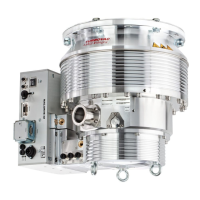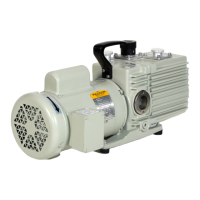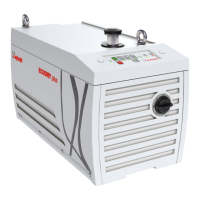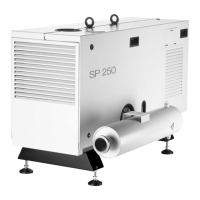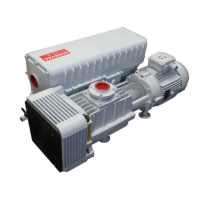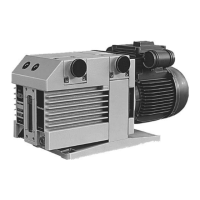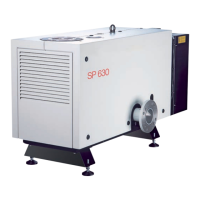8 300598802_002_C0 - 10/2016 - © Leybold
Description
The gas ballast valve is opened and closed by turning the gas ballast knob
(6/4) on the front.
To enable the TRIVAC
®
T to be used at intake pressures as high as 1,000
mbar, a special lubricating system was developed featuring force-lubrication of
the sliding bearings.
An oil pump (2/5) pumps the oil from the oil reservoir (2/4) into a pressure lu-
brication system which supplies oil to all bearing points (2/1). From there the
oil enters the pump chamber area (2/3) of the vacuum pump.
The oil pump is fitted in the high vacuum cylinder on the coupling side of the
pump module. The oil suction line is placed low, resulting in a large usable oil
reservoir.
The oil is separated from the gas in the TRIVAC
®
T in two steps as described
above. First, small droplets are coalesced into large drops in the internal de-
mister (1/10) fitted above the exhaust valve (1/9). Then, the large drops fall
into the oil reservoir as the exhaust gas is diverted by the inner walls of the oil
case. Thus a low loss of oil is obtained. This and the large usable oil reservoir
ensure long intervals between oil changes even at high intake pressures.
The vacuum is maintained by the TRIVAC
®
T through an integrated anti-
suckback valve (1/3) which is controlled via the oil pressure. During operation
of the TRIVAC
®
T the control piston (3/2) remains sealed against a spring (3/1)
by the oil pressure. The valve disk (3/5) of the antisuckback valve is held at the
lower position by its own weight (valve open). When the pump stops (because
it has been switched off or because of a failure), the oil pressure drops and the
spring (3/1) presses the control piston (3/2) right. Thus a connection is provid-
ed between the oil case and the piston (3/3) of the anti-suckback valve.
Due to the pressure difference between the oil case and the intake port, the air
presses the piston (3/3) up and the valve disc (3/5) against the valve seat
(3/4), which vents the pump chamber and forces the valve disc against its
seat. This effectively prevents backstreaming of oil or oil vapours. The anti-
suckback valve (1/3) operates independently of the operating mode of the
pump, i.e. also with gas ballast.
Fig. 2 Schematic of the lubricating system
1 Bearings
2 Non-return valve
3 Pump chamber of TRIVAC
4 Oil reservoir
5 Oil pump
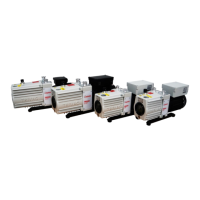
